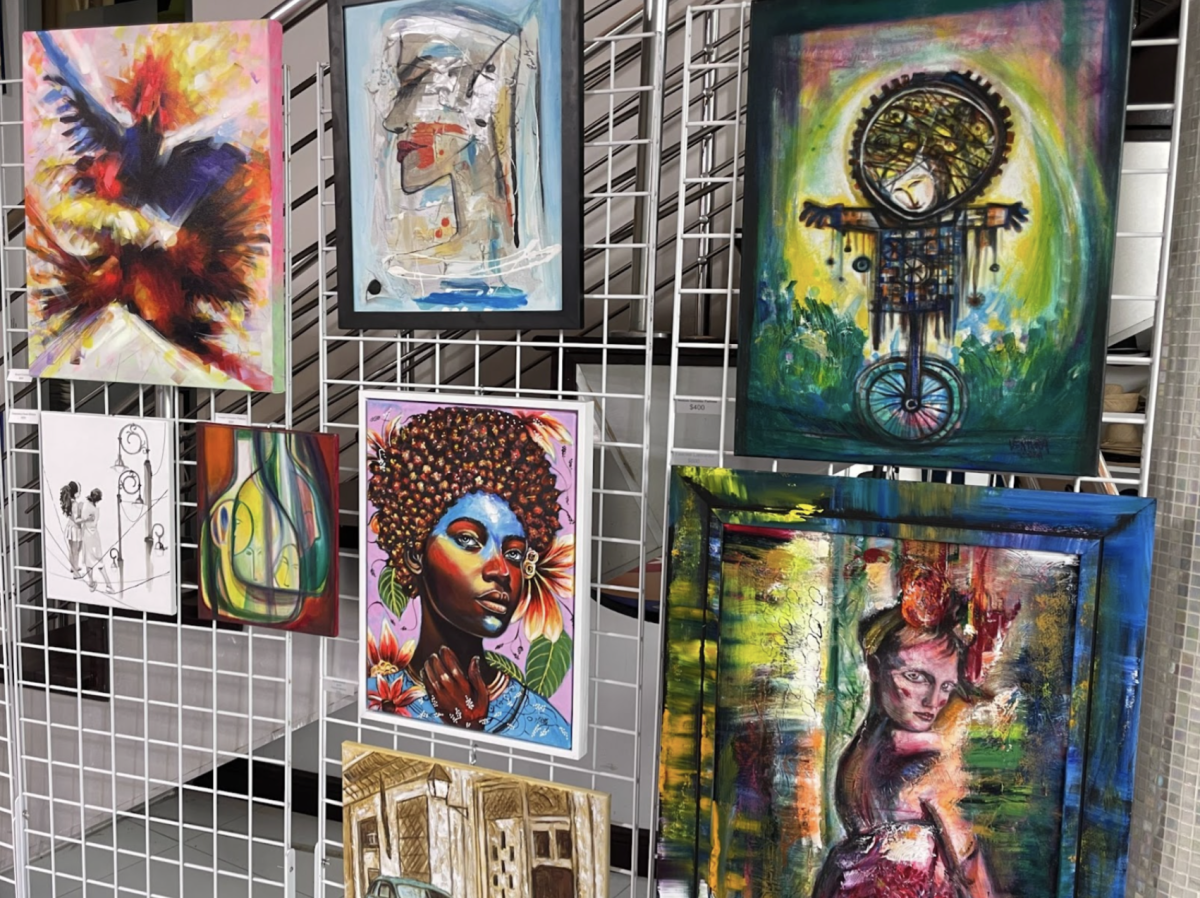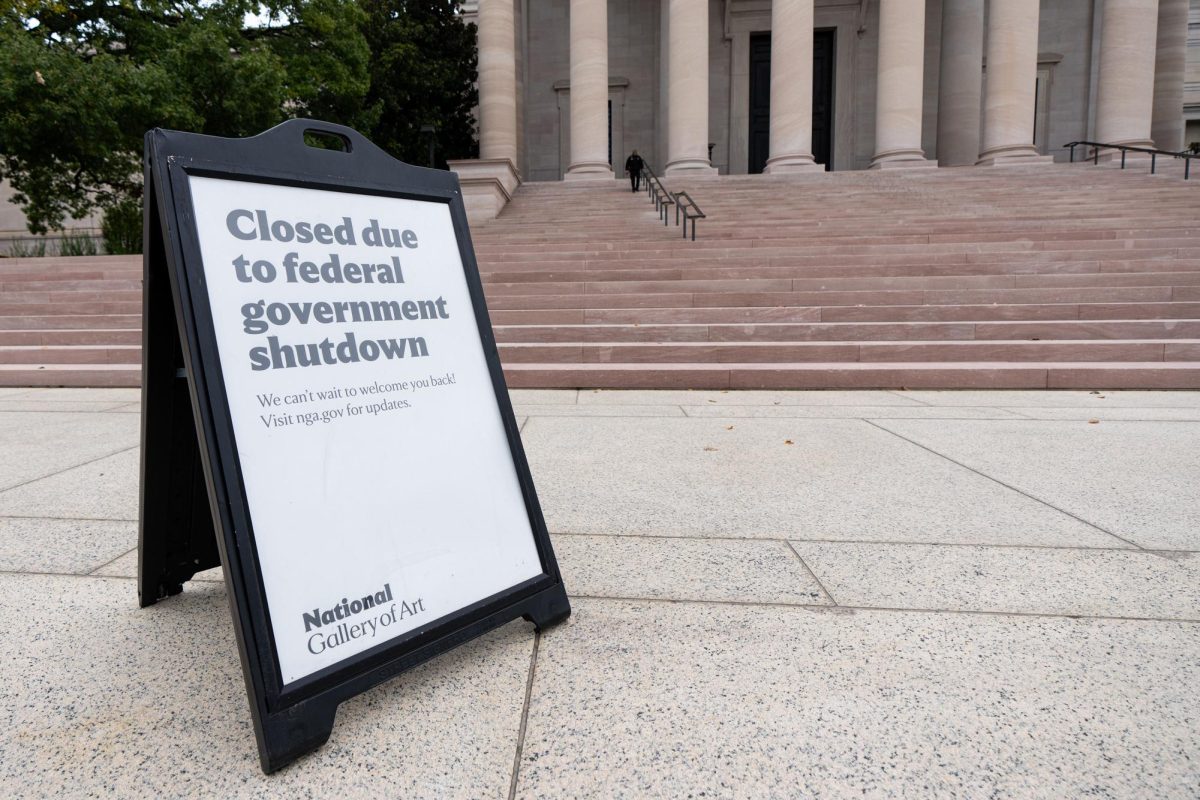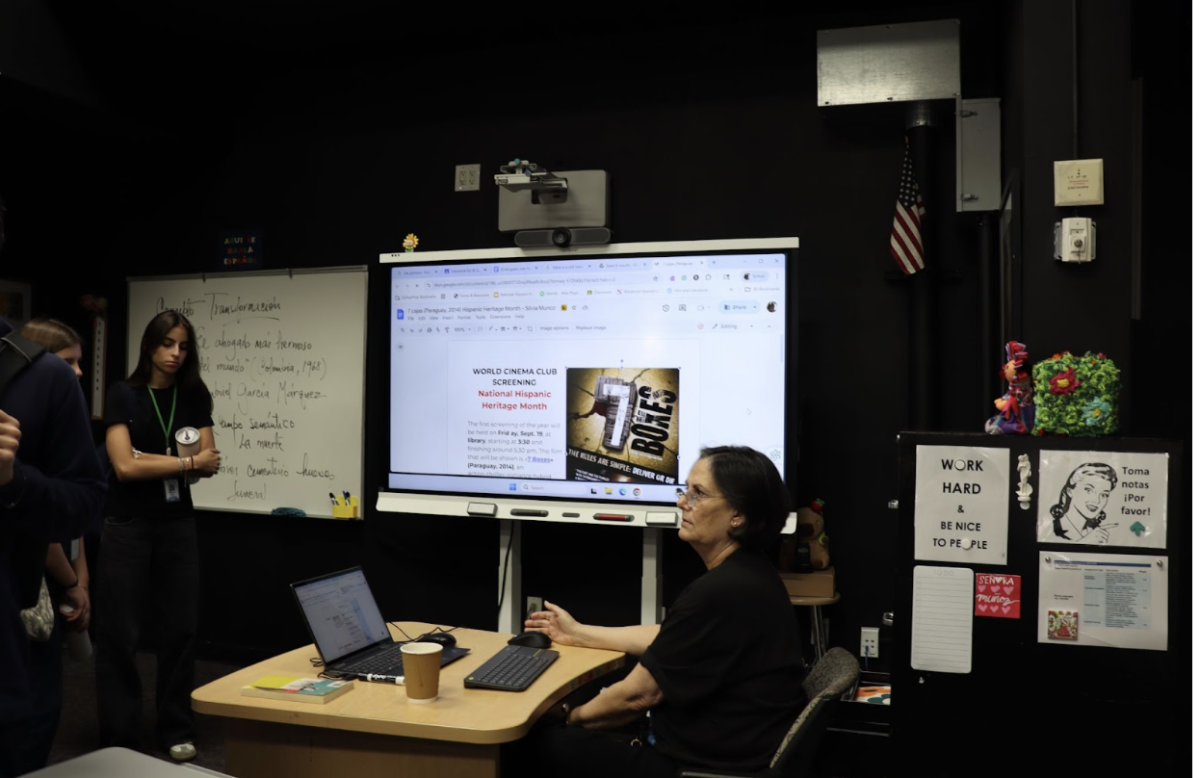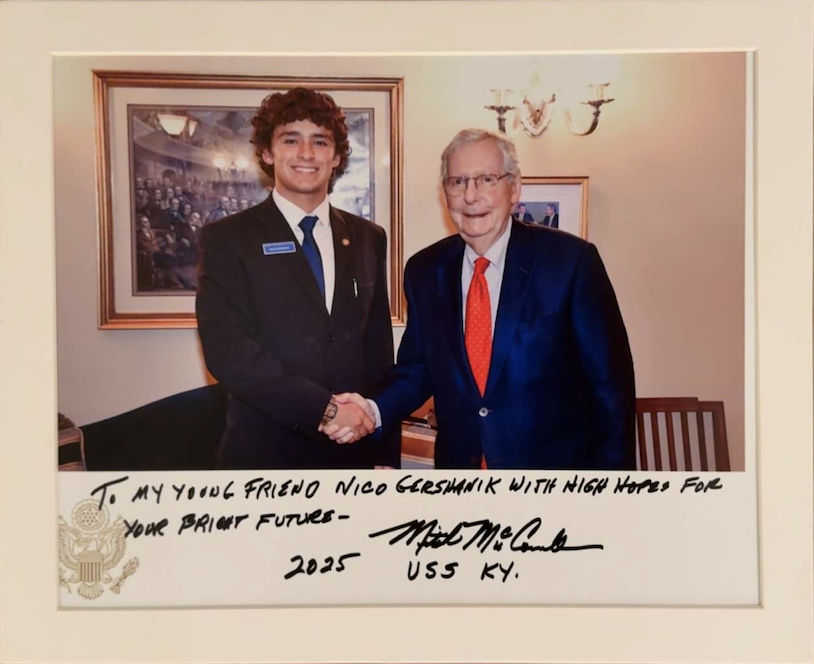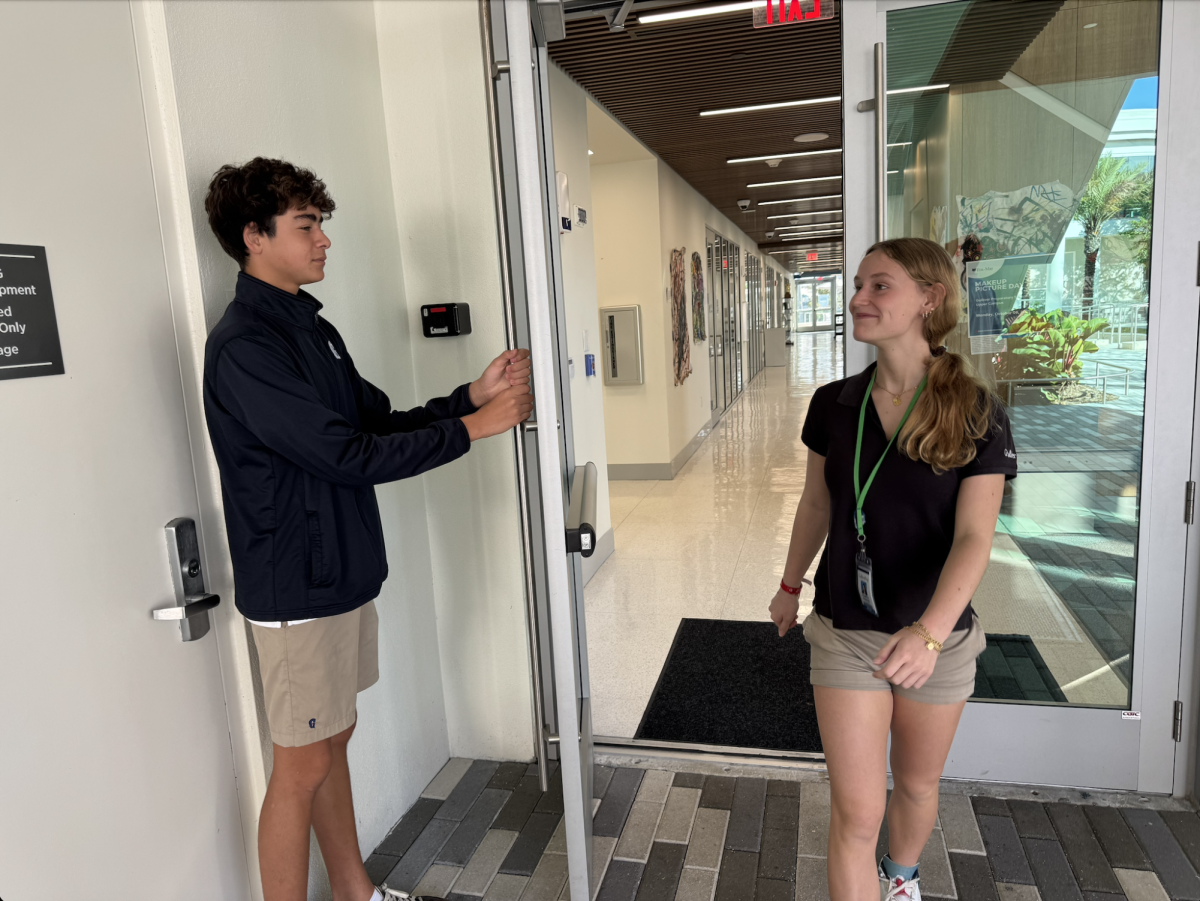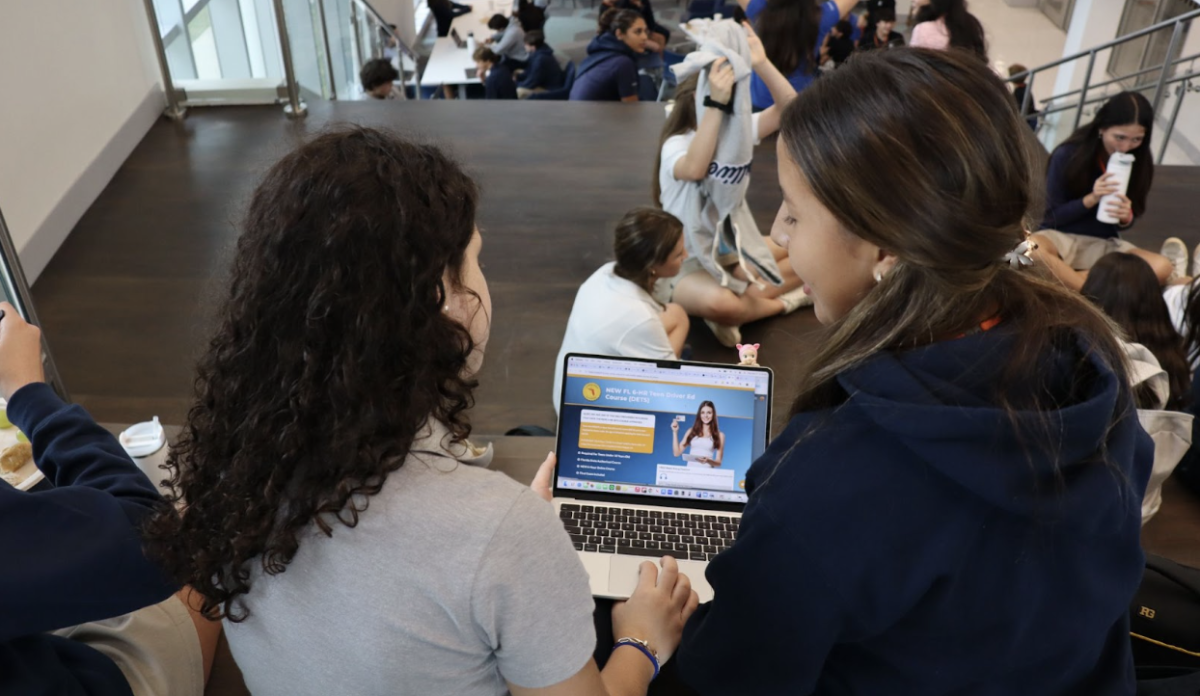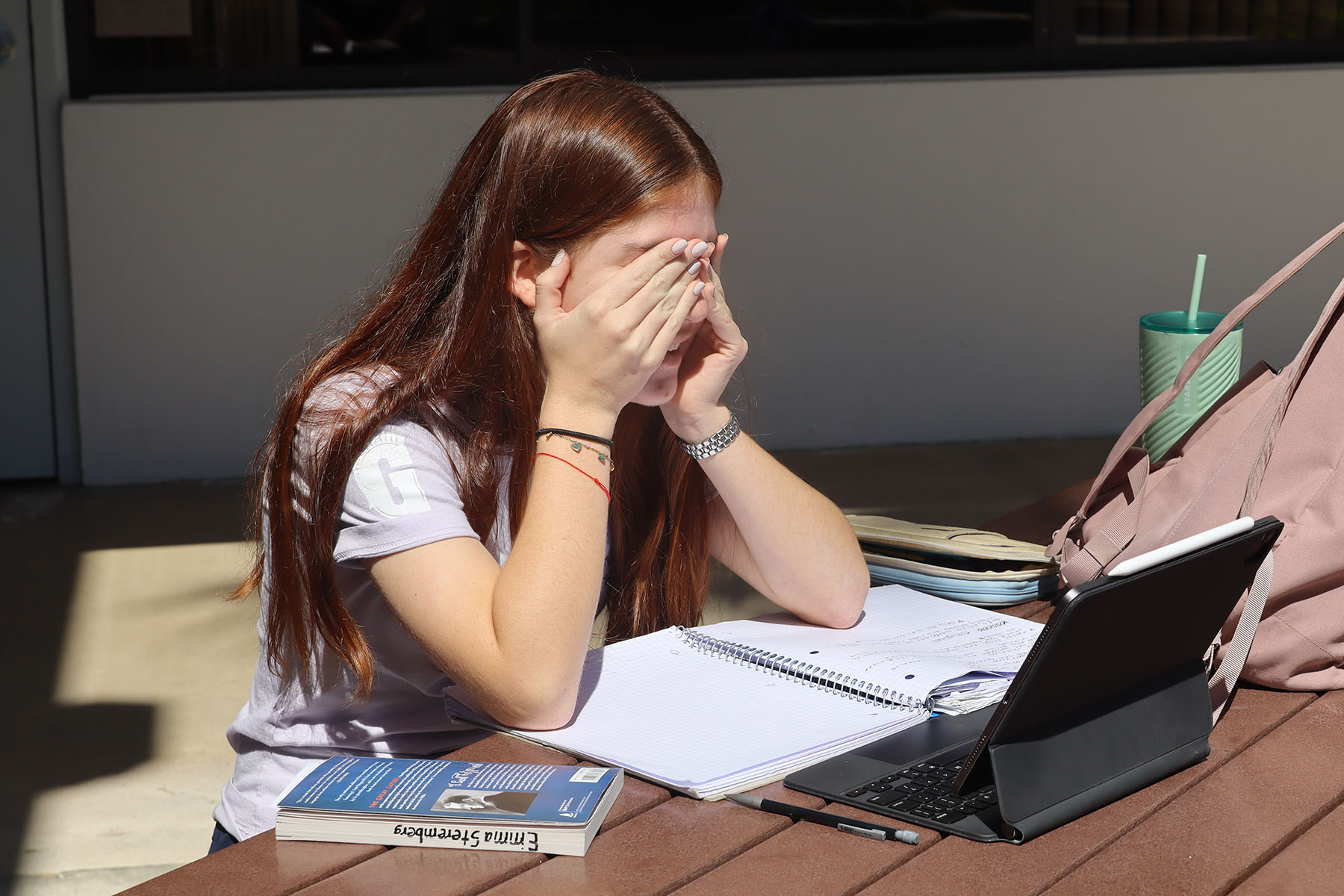
The Weight We Carry: Understanding Anxiety in Daily Life
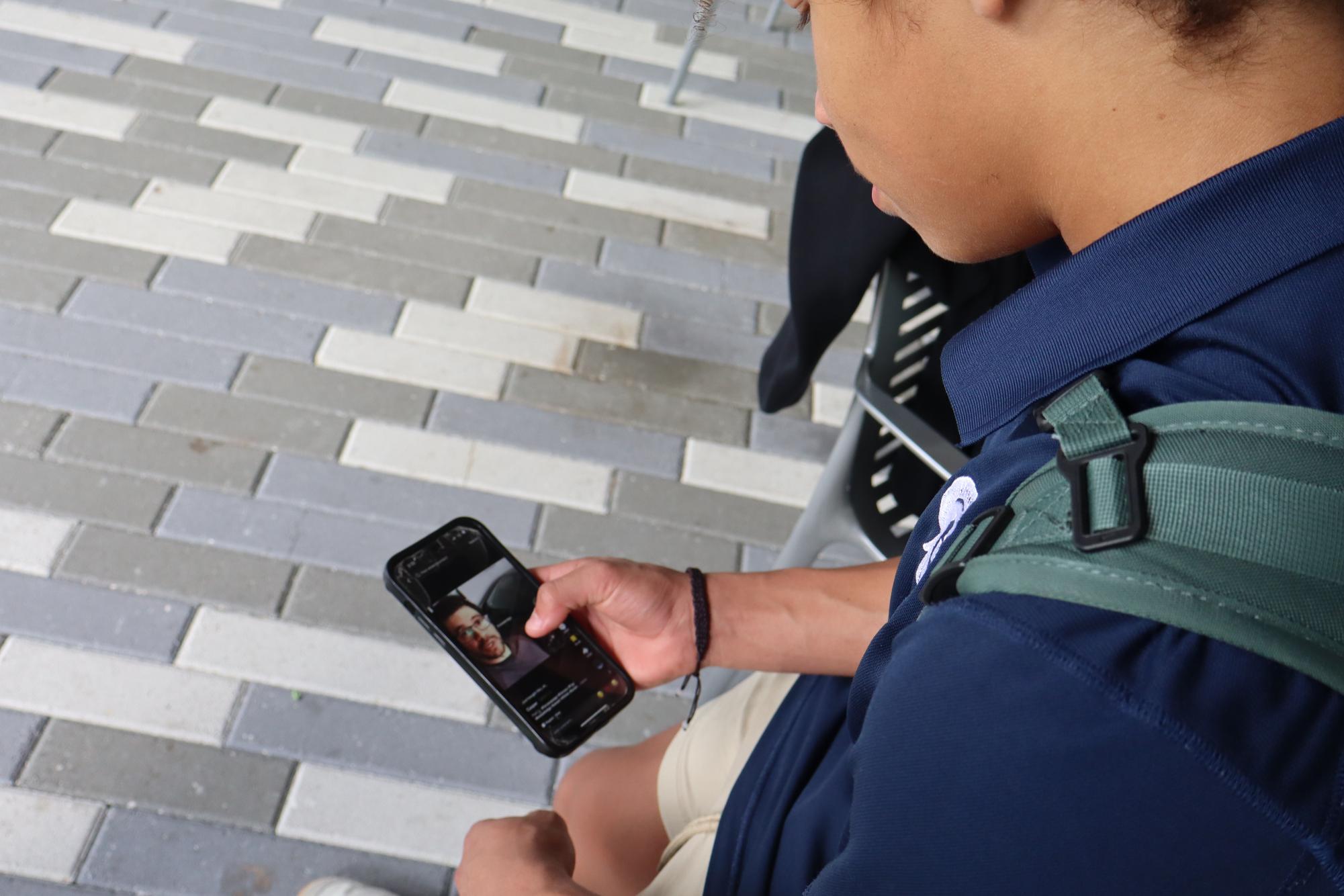
Teenagers today have a greater social presence in social media than any group ever; as a result, anxiety rates have risen significantly for Generation Z. Apps like Instagram and TikTok have a function: to make users scroll, and scroll, and scroll, and then pummel them with constant alerts and expert posts. Social media can serve as a useful tool for staying in touch, but it can cause everyone else in your life to make them question whether they’re getting in over their heads.
“The biggest issue with social media is that everyone compares their entire reality with someone else’s best,” AP and IB Psychology teacher Thomas Timko added. “And when teens only see everyone else’s best, it skews their perception of reality.”
It’s easy to forget that a lot of what we see online is actually planned, filtered, and even edited. Influencers have posted photos that look effortless, but in fact, many, many takes, expert lighting, and even a little bit of Photoshop have gone into them sometimes. What’s the consequence? Many teens will then start comparing their real lives to an idealized version of someone else’s life. If you’re seeing constant shots of perfect people, living in pretty locations, and having a perpetual party, no wonder your life can sometimes appear a little lackluster in comparison.
“Social media is a highlight reel—not a reflection of everyday life,” senior Sebastian Schnur said. “My sisters are addicted to TikTok and I have to always remind them that.”
Beyond just looks, social media creates youth’s perception of reality. All that continuous stream of posts and videos is designed to grab your attention—not necessarily educate. There’s a lot of information out there, but a lot of it’s not even useful at all. And when your brain’s toggling between schoolwork, texts, and social posts, it’s not simple to pay attention for long.
Social media isn’t going anywhere, and thus, the challenge lies in mastering its use in a way that doesn’t make one worse off. That starts with an awareness that whatever one sees on social media isn’t the full picture. All three groups—namely parents, teachers, and teens—can work towards social media becoming a tool for connecting and not comparing.

In a time where one in four people has been diagnosed with an anxiety disorder, people don’t know how to cope or handle their anxiety and struggle to even recognize it. Many times people will let their anxiety overwhelm them and cause them to have panic attacks.
The first step in coping with anxiety is recognizing it. Knowing what triggers it for the individual is a vital part of the process. One should know what sets them off, whether the trigger is procrastination or looming events. Along with that, having an understanding of the symptoms is a major help. Symptoms can be both mental like feeling a sense of dread and physical like becoming nauseous. Some ways to combat these symptoms are by using breathing techniques and the 333 rule. The 333 rule is when a person identifies three objects, three sounds, and three body parts. Although more of a temporary solution; doing this helps your mind become distracted while also helping you not experience derealization which is a symptom of panic attacks.
Anxiety isn’t just a one-minute ordeal though it’s a lifelong battle that over time can be won. Because of this many solutions are more long-term ways that build upon each other over time. Sleep is important for coping with anxiety as deep sleep helps rehabilitate the brain’s prefrontal mechanism, which regulates our emotional and physical state.
Studies from the Mayo Clinic showed physical activity reduces stress and boosts mood by releasing endorphins. Regular exercise not only improves mental health but also enhances overall well-being. It can help you focus, sleep better, and build resilience against stress. Around 30 minutes of moderate exercise, such as walking, cycling, or yoga four to five times per week have been found to a sweet spot as too much can have the opposite effect.
Along with physical activity having a healthy diet in which caffeine and sugar are limited as they cause certain anxiety symptoms to worsen. Alcohol and smoking have also been shown to escalate anxiety. Finally speaking to either professionals or friends and family can help alleviate stress as it diminishes stress over time and makes you feel less lonely.

Rising anxiety rates leave adolescents searching for ways to cope with stress. Often, however, unhealthy coping mechanisms lead to an increase in anxiety, causing a positive feedback loop for one’s mental health.
In an era of technological advancements, teens are constantly on their cell phones. This, however, serves as an unhealthy anxiety-inducing coping mechanism as social media platforms are strategically designed to be highly addictive. Moreover, the release of dopamine in the brain that occurs every time one receives a notification or scrolls endlessly creates a numbing effect that blurs out thoughts and leaves cell phone users in a brief state of false well-being. As a result, teens momentarily forget about their anxiety without assessing or working through their situation.
As teens continuously avoid their problems by using their phones, they engage with online content that causes more anxiety. The most significant way this is seen is in the proliferation of excessively curated lifestyles and unachievable beauty standards. Constant exposure to falsely perfected lifestyles can damage self-esteem for teens at a vulnerable stage in life when they are trying to find their own identity. An article by Anna Bannon at Study Breaks, a magazine run by college students across the United States, explores how online aesthetics further limit individuality to explain anxiety’s role in online conformity.
“Thus, we are faced with the promise of happiness within the rigid confines of what another person judges ideal — existing on someone else’s terms, in accordance with someone else’s dreams,” Bannon explains.
The mechanisms behind this persuasion are additionally discussed in the Netflix documentary The Social Dilemma, where employees of big social media companies explain how adaptive algorithms encourage addiction to their platforms by recognizing people’s deepest impulses and using them against them. As a result, users are presented with unattainable expectations that elicit discomfort stemming from an inability to comply with perceived social norms. A study from The National Institutes of Health explains,
“The incessant exposure to carefully crafted and often unrealistic portrayals of life on social media platforms leads to feelings of inadequacy, anxiety, and a sense of missing out, contributing to the rising prevalence of mental health disorders.”
Claims by the NIH are supported by teacher and psychologist Thomas Timko. In addition to his personal research on students with Attention Deficit Hyperactivity Disorder (ADHD) and extensive work within mental health hospitals, Timko has taught psychology at the high school level for eighteen years and explains how he has observed both the rise in cell phone usage and the invention of social media impact teenage behavior. Through his experience, he believes that social media is detrimental to teenage self-esteem.
“One of the main reasons for an increase in teenage anxiety, I believe, is that what people post is only part of their life, but when someone sees what others share, they assume that is all of their life. If we compare ourselves to other people’s good things without looking at their bad things, we start looking negatively toward ourselves.” Timko explains.
Timko continues to explain how psychology has been used in marketing for a long time and that the new role of influencers in digital marketing techniques only furthers the deterioration of teenagers’ self-esteem and increases anxiety.
“The role of influencers is to push you away from who you are to be more like them and buy the products they promote,” Timko said.
Social media’s influence on identity can be further understood through the framework of Media Effects research, as described by Joseph Turow, a Communications Professor at the University of Pennsylvania, in Media Today: Mass Media in a Converging World. Media Effects refer to how media influences beliefs and behaviors, ranging from short-term physiological reactions to long-term attitudinal shifts. For instance, social media fosters Belief Effects, such as adopting the idea that thinness equates to attractiveness due to the popularity of certain body types online. This belief can lead to Attitudinal Effects, like judging others’ attractiveness based on unrealistic standards. Prolonged exposure to curated trends and lifestyles can shape judgments that influence social acceptance, heightening anxiety among teens.
Teens are especially vulnerable to Media Effects due to their developmental stage, where peer approval plays a crucial role in shaping identity and societal belonging. This combination of developmental sensitivity and social media’s pervasive influence creates a feedback loop of judgment, anxiety, and unattainable expectations, an idea that further supports Timko’s argument.
“The teenage years are a turning point in a natural progression from being very family-focused to breaking away to try and figure out who you are and how you fit into the world. Therefore, the teenage years are a particularly vulnerable stage in which to be presented with so many unrealistic expectations of who they could be.” Timko continues.
In a desperate attempt to find a sense of belonging, teens who are constantly online may not only feel drawn to comply with trends based on physical appearance but also public opinion. This is largely because social media allows people to express their identity by sharing and discussing their beliefs, as anyone has the power to get online and post whatever information they want regarding current affairs. The issue is that, for the most part, these content creators are not telling people what happened; rather, they are spreading a biased version of what happened and telling people how they should feel about it. Users are not presented with such over-opinionated content at random; rather, they are presented by the same strategically curated algorithms. Every content on one’s page is designed to maximize screen time. Over time, the algorithm will push information that aligns with people’s beliefs and block out any contradictory opinions, creating an involuntary confirmation bias that grants users a false sense of esteem and comfort in their beliefs. These arguments are supported by a panel of experts at Harvard Law School warning that Facebook and Google have already damaged democracy.
Tristan Harris, co-founder and president of the Center for Humane Technology, explains,
“Social Media can’t polarize the population. No matter where you stand — if masks are your thing, or vaccines, or critical race theory — it doubles down on your perspective or reminds you why the other side is wrong.”
Being repeatedly presented with biased ideas creates a false consensus effect where people create an unrealistic worldview, often leading users to catastrophize current affairs. Entering the offline world and being presented with countering ideals and realities creates a great deal of anxiety, especially for young adults who are just beginning to cultivate their own perspectives.
“Bad things and good things are going on all the time, but we don’t have access to the other side, however we feel. Leads to biased and anxiety-inducing unrealistic views of the world.” Timko explains.
Timko continues to explain how, at the moment, there is no clear way for parents to develop techniques to prevent the detrimental effects of social media as this is a relatively new phenomenon that current adults have not grown up with. Thus, it will be another 20 years before today’s teens become adults and can use their personal experiences to shape that of the next generation. However, it is important to remain informed about the impact of digital media consumption and remain cautious as we explore our online presence.

Anxiety continues to rise among teenagers, with one in five students reporting overwhelming stress, according to the American Psychological Association. For many, sports provide relief, offering physical benefits and emotional stability.
“School gives me unwanted anxiety, and I use basketball as an escape from that pressure. Exercise overall reduces stress, and playing sports gives me a break from my strenuous schedule,” senior varsity basketball player Dylan Brown said.
Sports offer more than just physical activity—they build community and encourage athletes to focus on the present moment. Coaches witness these transformations firsthand, especially in athletes dealing with anxiety.
“I’ve seen that when athletes compete and succeed, they gain confidence. Once they build confidence, it often overcomes anxiety—at least in the sporting world. My anxious players become less anxious after succeeding at a task, and that success turns into confidence,” junior varsity basketball head coach Justin Cardoza said.
Experts agree that physical activity benefits mental health. Football coach and psychology teacher Pedro Neiva explains the science behind it.
“Working out releases endorphins, which help regulate hormones, including dopamine—the neurotransmitter responsible for happiness. As a result, exercise creates a euphoric sensation, making people feel better. Especially today, when anxiety weighs heavily on many, working out can be an effective way to cope,” Neiva said.
Despite these benefits, some students hesitate to engage in physical activity, worried about performance pressure or time commitments. Senior lacrosse player Hoban Noyes encourages them to try, even recreationally.
“Staying active is really important because it helps you step away from stress when you’re not on the field. It’s a great way to clear your mind, stay healthy, and connect with others who share your interests,” Noyes said.
According to the UTMB Department of Pediatrics, with mental health concerns rising, sports could help students develop healthier habits on and off the field.
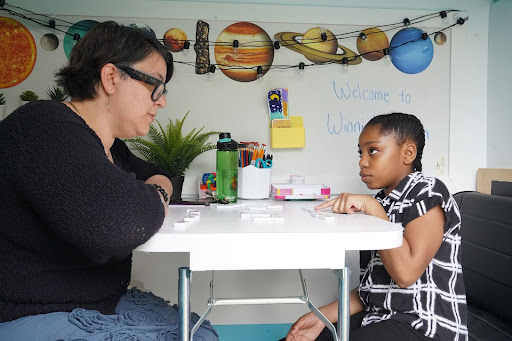
By the American Psychological Association’s reckoning, one in three U.S. adolescents report significant anxiety, much of it related to academic pressures. It is not about the failure of a test, it is about losing an opportunity for admission to a “good” college that has become perceived as a ticket to success and happiness. This dominant preoccupation with academics, more with the college selection process, has such deep effects both on mental health and the very system of education.
Understanding Academic Anxiety:
Anxiety refers to the psychological and physiological distress that one experiences about the academics of school. Symptoms can be so minor as, restlessness and insomnia, or as serious as physical problems like headaches, nausea, or even chest hurting. At worst, it contributes to long-term mental health conditions such as depression and burnout.
The causes of academic anxiety are so complex. Parental expectations are one of the most important factors because students internalize this pressure to excel and then fulfill parental ambitions and expectations. Peer competition also makes the stress especially environments where achievements are highly valued. Standardized testing adds another layer of anxiety as students feel a single exam score could define thief futures. Then there is social media. These sites such as Instagram, and LinkedIn produce a sort of “highlight reel” of the successes that everyone else is having without showing their struggles.
Pressure to Get into a Good School:
The stakes have never been higher in college admissions. Top university acceptance rates have plummeted below 10% at some Ivy League schools and elsewhere, according to U.S. News & World Report, further heating the race for admission. The increasing selectivity of these institutions, according to the National Center for Education Statistics, has left a growing number of students feeling as though only elite schools are worthy of their ambition.
The unrelenting pressure has been unsettling. Burnout, characterized by emotional exhaustion with also academic pressure, has become the norm for many high-achieving students. Impostor syndrome-a feeling that success is undeserved affects even those who managed to gain entry into the most elite schools. And in some cases, ways of coping developed that were seriously unhealthy, ranging from dependency to academic dishonesty.
Cultural factors also play a role. In many communities, attending an elite institution is seen as a status symbol that marks both personal and family success. This cultural emphasis dismisses the value of alternative educational paths, such as trade schools or even gap years.
Managing Academic Anxiety:
Fortunately, some ways exist by which students could bring academic anxiety into their routine. Time management and realistic goal setting are important. Putting big activities into smaller tasks with achievable milestones reduces the burden even more. Minimizing negative emotions, some methods include meditation and breathing exercise activities. Tools such as apps provide guided mindfulness meditation to the users: examples include Headspace and Calm.
It is for the parents and educators to begin creating environments where mental health takes more importance over achievement. The open discussion of mental health, various post-graduation options, and movement away from defined success can help take the pressure off many students.
Even educational institutions themselves are now starting to take into consideration how much academic anxiety is taking from the students. Test-optional admissions policies are increasing, and standardized tests are becoming de-emphasized. Schools are moving toward assessing the student with holistic criteria such as creativity, leadership, and character, rather than just numbers.






